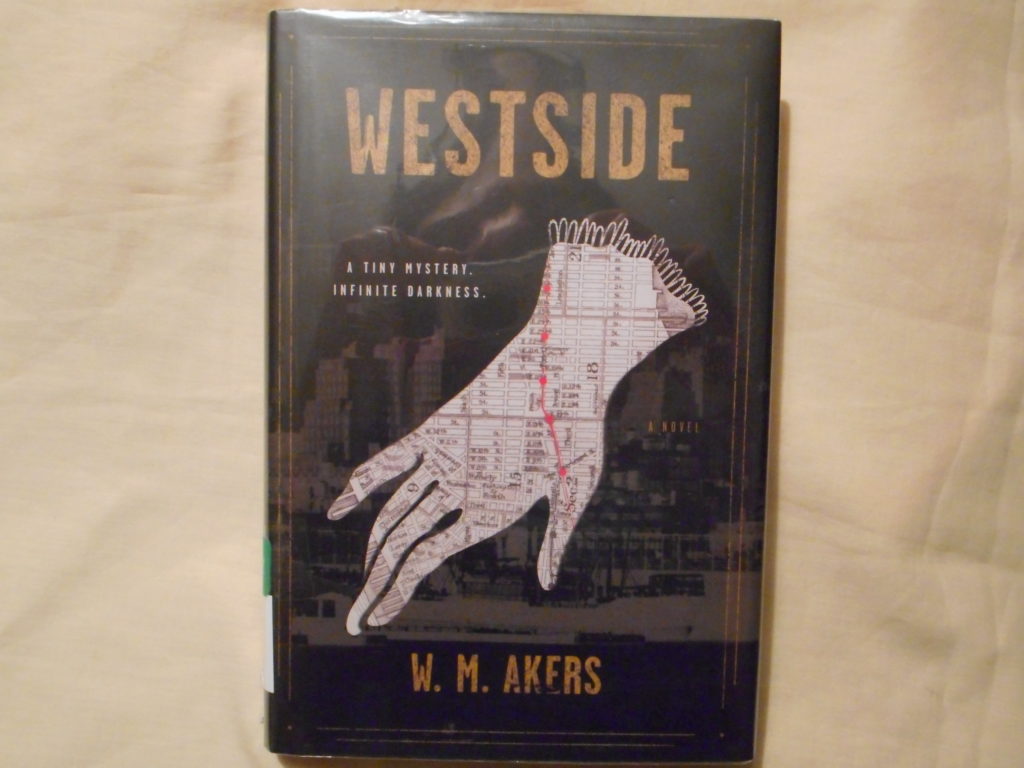Westside by W.M. Akers would best be described as a fantastical mystery. It has elements of both fantasy and mystery, and draws you in to a world both familiar and strange.
It’s 1921 in a New York where all the land west of Broadway has become wild. Buildings crumble, tools and guns turn to rust, and trees grow rapidly. The Lenape warned the Europeans of the oddity of this land, but in true colonial style these warnings were ignored. The forest was pushed back, and for a few hundred years the Westside seemed like the rest of the city.
In 1900, people began to disappear. At first the disappearances went unnoticed. But soon the number of missing people became too great to ignore. The usual scapegoats couldn’t be blamed for long. People were vanishing into the shadows on the Westside. In 1914, a fence went up through the center of Broadway that only a permit or bribe could open.

Life on the Eastside went on. It was maybe a bit more crowded with Westside refugees, but it was more or less in line with post-WWI New York. However, the Westside was divided into two zones. The Lower West was controlled by a bootlegger, a woman who let things go as long as you didn’t interfere in her business. There were few residents left, trees grew through the buildings, and the pavement was covered with moss.
North of 14th Street was ruled by a 20th-century Robin Hood by the name of Virgil Carr. Funded by stolen goods, Virgil’s crew cut back the trees, tended bonfires, and distributed candles. Virgil used to be a street thug, policeman, and a private detective before disappearing into the shadows himself.
His daughter, Gilda, still lives on the Westside and this is her story. Gilda works as a detective specializing in “tiny mysteries.” Mysteries like finding a lost glove or the lyrics to a half-forgotten song.
But the big mysteries can’t be held at bay forever and become entwined with the tiny ones as the story progresses. The lost glove sends Gilda to the merchant who bought it. When the merchant is killed right in front of her, Gilda finds herself at the center of a big mystery. Who shot him? How did a gun even function on the Westside? Did he run afoul of the Bootlegger? Her father?
The song lyrics provide a clue that leads Gilda to the smugglers, the origin of the swallowing shadows, and to a whole other New York (in the most literal sense). Gilda is determined to figure out what’s going on in order to protect her home and all the other people who live there. She has doubts and fears but she pushes through because she loves the Westside.
That love of the Westside is evident from the descriptions in the book. It’s told from Gilda’s point of view and the visuals of the overgrown city are beautiful in a mysterious and sad sort of way. The affection Gilda has for the Westside, even the hard parts, is clear.
I really enjoyed reading Westside. The book was weird, in the best way, and a good mystery, too. I hope we see more of Gilda and the Westside in the future.


Comments are closed.